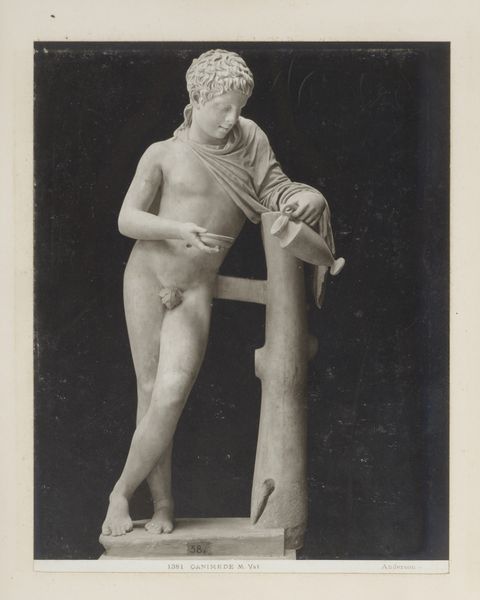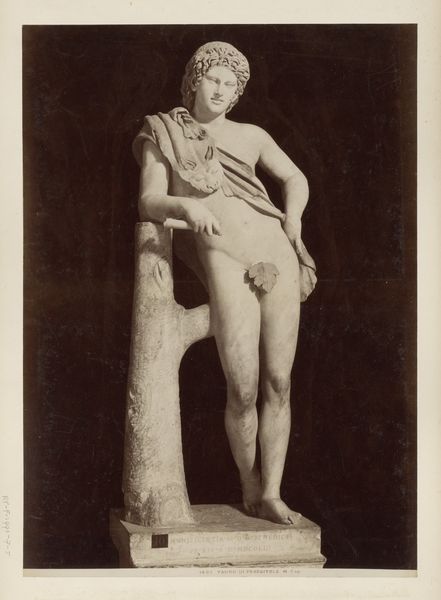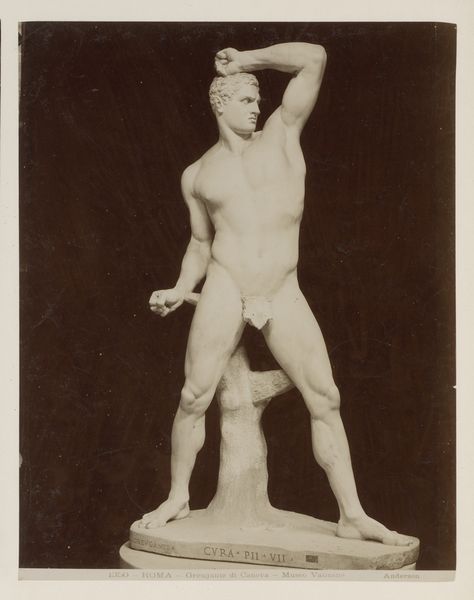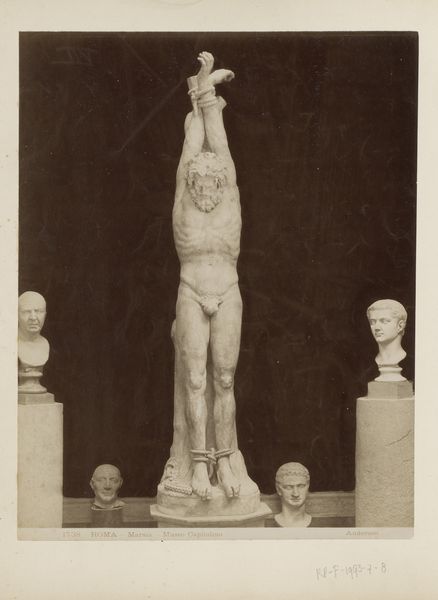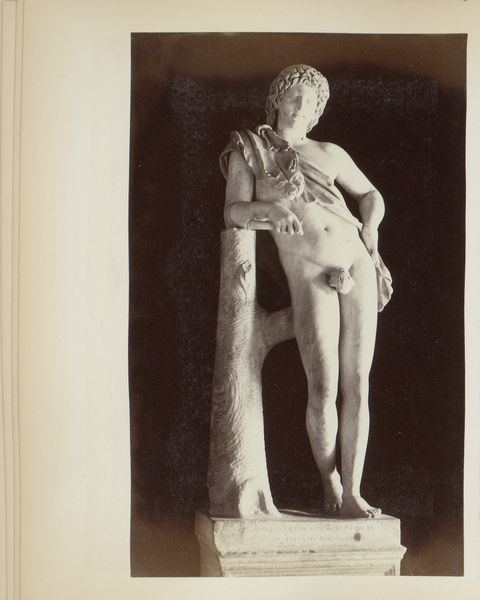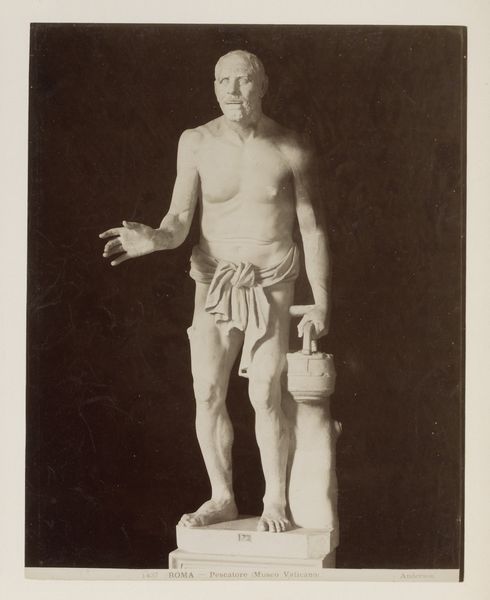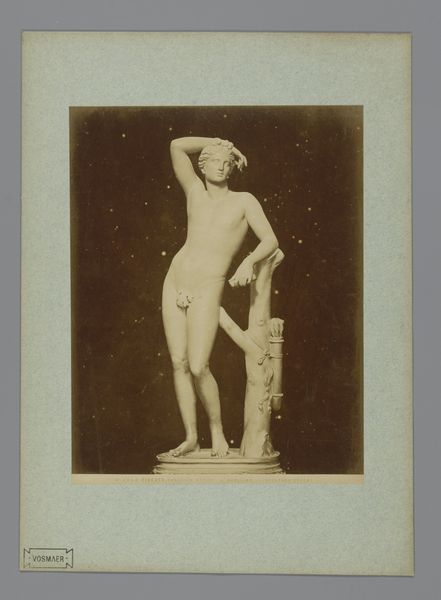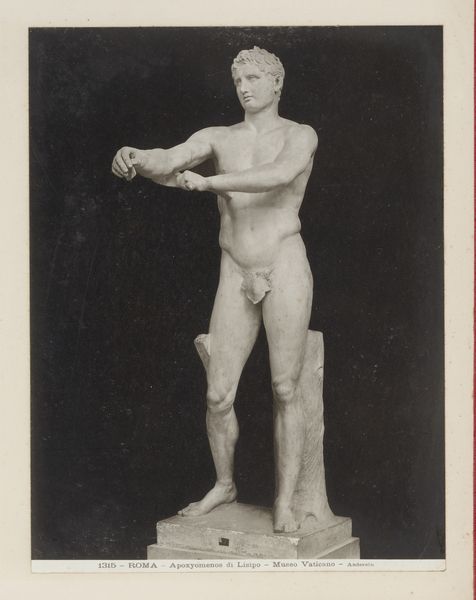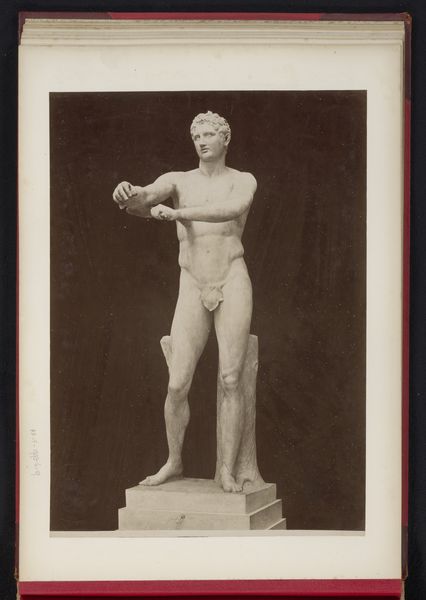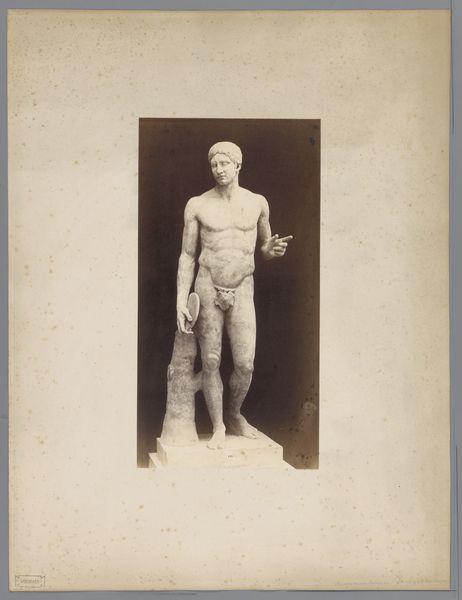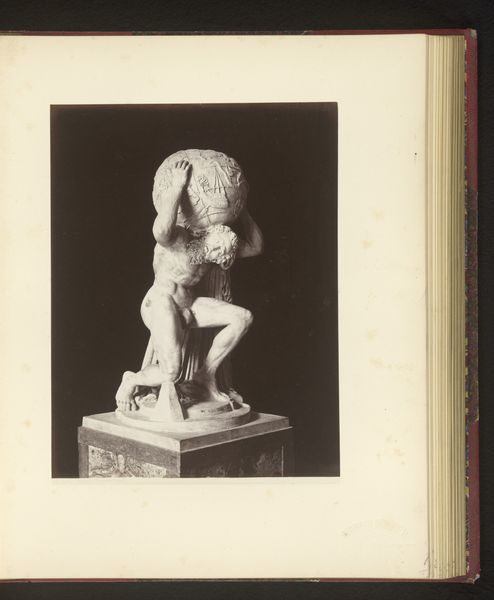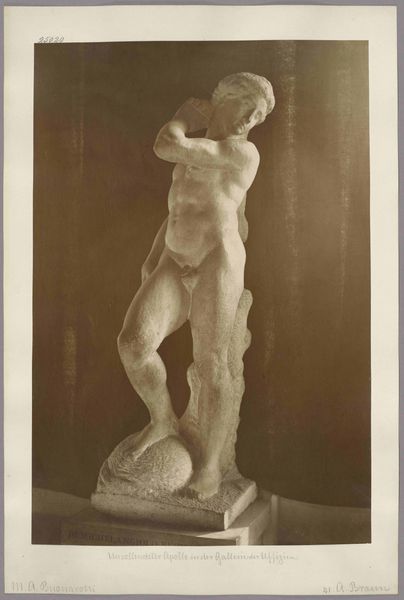
#
sculpture
#
charcoal drawing
#
sculptural image
#
possibly oil pastel
#
charcoal art
#
unrealistic statue
#
earthy tone
#
underpainting
#
charcoal
#
statue
Dimensions: height 376 mm, width 280 mm
Copyright: Rijks Museum: Open Domain
Curator: So, here we have a photographic print entitled "Sculptuur van Apollo Sauroktonos, Vaticaan," by James Anderson, dating from between 1857 and 1875. The image depicts a sculpture. What are your initial thoughts? Editor: Well, at first glance, it appears to be a somewhat theatrical, staged photograph. The figure is a classical nude, rendered in a monochrome palette. What strikes me, however, is the depiction of labor. This isn't a polished marble but a reproduction rendered, potentially, through casting or even ceramic, photographed to emulate that marble quality. What do you see in it? Curator: It is an exploration of reproduction. The artist, James Anderson, likely sought to capture and disseminate classical forms through accessible photographic prints. Consider the economic factors. How would this democratize art viewing for those unable to travel or afford original sculptures? The very act of photographing inherently challenges our understanding of originality and authorship. Do you agree? Editor: I hadn't thought about the distribution aspect so explicitly, but it makes perfect sense. I mean, it really questions how we consume art, doesn’t it? Not as a singular, precious object, but something mass-produced and circulated. So, are you suggesting that Anderson's focus wasn't just on the beauty of the sculpture, but on its material accessibility through photographic reproduction? Curator: Precisely. The material act of photographic reproduction changes the social life of the object itself. The print transforms the marble Apollo into a commodity available to a wider audience, changing its function and meaning within society. Editor: This definitely reshapes my perspective. It’s less about classical idealism and more about how art circulates within systems of production and consumption. It provides new considerations. Curator: Exactly. And it’s important to analyze both what's depicted and *how* it’s depicted – what labor and economic structures are inherent in its creation and distribution? Hopefully we now see the true statue differently as a result.
Comments
No comments
Be the first to comment and join the conversation on the ultimate creative platform.
